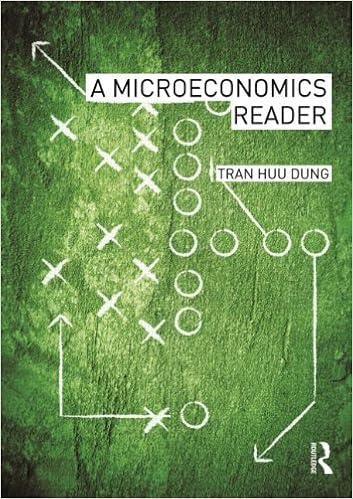This book draws together the key contributions to the major areas of microeconomic theory from the last few decades. It is intended to provide both undergraduate and graduate students with an essential guide to the current state of the discipline. This collection can serve as a reference for readers who are already significantly advanced in their microeconomics education and seek to complement their knowledge further.

Discussions about macroeconomic policies typically dominate the news cycle. Often less visible – but no less important – is microeconomics, the study of the behaviours and decision-making process of individual consumers, households, and firms. Paying homage to this complex field is A Microeconomics Reader, a hefty anthology of twenty-nine articles that aims to capture the theoretical underpinnings and breadth of this discipline.
Edited by Tran Huu Dung, an Associate Professor of Economics at Wright State University with a specialty in East Asian economies, the collection seeks to provide readers with a view of the current state and evolution of microeconomics. The editor does so by compiling a variety of seminal papers, one of his chief goals being to construct a big-picture view of the discipline.
Tran Huu Dung introduces his volume by informing readers that “microeconomics has grown out of its neoclassical mold.” This evolution is due, in part, to the development of both a stronger connection with business practices and a deeper theoretical integration based on commonalities such as transaction costs, the role of information, and strategic interactions among economic agents. Such contributions “have reframed many familiar problems.” The once-novel inclusion of transaction costs, for example, rendered microeconomic models more realistic by complementing production costs with non-production costs. So too have the concepts of rivalry and imperfect and asymmetric information permitted theoretical models to advance. The editor uses these elements to frame the evolution of contemporary microeconomics as a discipline: one that has grown out of “refinements” to neoclassical theory and an evolution of the general equilibrium approach.
The Reader is organized into five sections. It begins similarly to most microeconomics textbooks with a presentation of consumer theory followed by firm theory. Then, it takes up theory of the market as well as pricing and labour compensation theory. Textbooks typically present neoclassical microeconomic theory but may fail to show students how this theory has evolved over time or how it is embedded into the microeconomic landscape. The Reader can be useful for filling this gap as it pulls heterogeneous articles together on sub-themes.
The choices of the first section help to illustrate the “broad methodological spectrum” approach of the anthology. Tran Huu Dung chooses a few seminal papers in consumer theory, like that of Gary Becker (1965) who used the problem of time allocation as a constraint in actors’ decisions about labor supply and Stigler and Becker (1977) who detail the use of traditional utility maximization. These articles contrast with pieces such as Leibenstein (1950) and Simon (1986) who take a closer look at assumptions about behavior, preferences, and rationality. All worthwhile in their own right, they present a nuanced picture of consumer theory.
Following such a broad approach, the subsequent articles are understandably heterogeneous, covering contributions from the likes of Coase, Akerlof, Stiglitz, and Varian, among many others. This quality can be viewed as both a virtue and a fault of the volume: while the breadth of articles provides a multifaceted perspective of different views within the discipline, it can prevent the reader from delving into each topic completely. With a very brief introduction for each section, the editor provides some context for the relevance of the selected articles but largely allows the papers to speak for themselves. It is not immediately evident how much value-added this discussion can bring for less-experienced readers. Indeed, though “super-technical articles are avoided,” the reader must be well-versed in microeconomic theory in order to fully appreciate the reprinted articles. Therefore, a somewhat more substantial discussion of the contributions of each article could render the book more accessible to a wider audience. A final drawback for many readers will undoubtedly be the intentional exclusion of empirical papers.
A Microeconomics Reader can therefore serve as a reference for readers who are already significantly advanced in their microeconomics education and seek to complement their knowledge further. It will be favoured by those who prefer to see concepts explained by original authors as well as those looking for a compendium with substantial breadth. Those in need of more explicit guidance, on the other hand, may be left feeling somewhat alienated.
No comments:
Post a Comment